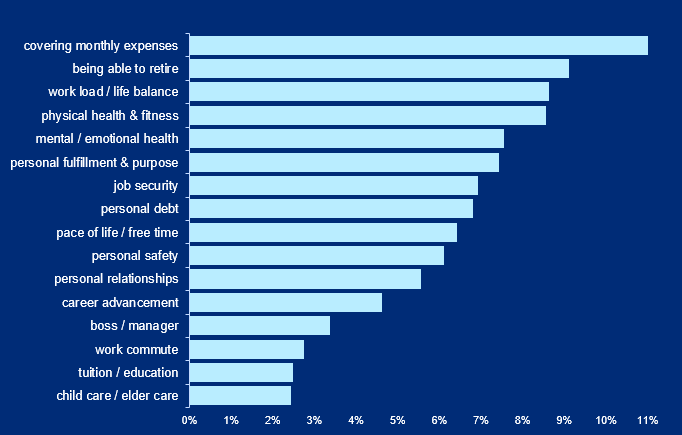5 creative ways to think about sourcing talent for your hard-to-fill roles

Download complimentary Future Jobs Report from Mercer
Today’s challenging and complex labour market has thrown many businesses into unknown waters. Shifting flexible work arrangements create waves that can overwhelm your organization’s ship. Before you can right yourself, employee compensation expectations change, blowing your workforce strategy off course.
Quality workforce data and advice are your life rafts to the solid ground on which your business can thrive. Use the latest data to fill hot jobs with eager employees who have the required hot skills. With updated strategies, you can weather future storms and challenges.
Let’s dive in and explore six strategies to fill your hot jobs in a tumultuous workforce.
What are the most significant factors impacting the labour market in 2023?
Inflation has increased labour costs. In the 12 months between January 2022 and January 2023, inflation rose to 6.4%. Organizations responded to recent inflation with workforce reductions.
The employees who remain are asking for more flexible work arrangements. That type of arrangement allows employees to balance second jobs, caregiving duties, and long commutes.
Organizations can attract more talent, retain current talent, and increase employee satisfaction by building workforce strategies based on the latest insights. Data from current surveys can tell employers what employees are looking for in jobs, development opportunities, rewards, and general company characteristics.
Surveys can also provide an organization with insights into the compensation offered by its competitors, so that it doesn’t overpay for unnecessary positions but does offer competitive pay for crucial roles.
What jobs and skills are in demand now?
Download Future Jobs Report from Mercer
By mining Mercer’s Skills database, we found that the jobs in high demand in the US include security guards, administrative assistants and secretaries, store management, and customer service.
Interestingly, the jobs with incumbents that saw the highest increases in pay (>10%) from 2021 to 2022 were more in manufacturing and IT.
In Canada, the Skills database revealed that, as in the US, customer service employees and secretaries and administrative assistants are hard to find. Unlike in the US, Canadian companies are struggling more with finding workers for food service, sales, and some repair and maintenance roles. The highest increases year over year for employees went to engineering and IT professionals.
Some customer service roles saw larger than average year over year increases from 2021 to 2022 in both the US and Canada.
Because of the high demand for employees to fill these jobs, they require an organization to consider their level of total rewards and what makes them competitive. Although it’s not all about the money, it’s still critical to be competitive, especially when roles are hard to fill.
Some positions remain more stable, as most incumbents stay in the job longer at their current salary. From 2021 to 2022, some hot jobs with little turnover included electrical engineers and mechanical engineers in Canada and forklift operations and warehouse order support in the US.
Organizations are concerned about more than just filling roles. As organizations move toward more agile workforce and staffing models, many are seeking particular skills to meet specific needs to drive their success. Most recently, the hottest skills that organizations are seeking include:
- Budgeting
- Detail oriented
- Problem solving
- Interpersonal and written communication
- Influencing skills
Budgeting and other hard skills can be taught to someone hired without those skills or current employees can be mentored.
It is often more difficult to fill roles that require soft skills, such as attention to detail and problem solving, and these skills are often more challenging to teach. You’ll usually want to find someone who already has those skills and then provide resources for developing their skills further.
It is often hard to assess whether someone has good soft skills based on a resume or a half-hour interview. It’s likely you have a better idea of who possesses those skills within your own team. This is just one of the reasons it’s time to approach filling hot jobs in a different way.
Download Future Jobs Report from Mercer
5 ways to approach hot jobs in 2023
Use these five tips to fill positions that are in high demand and that require the hottest job skills.
1. Turn to your internal labour market
Did you know that you have a highly trained talent pool at your fingertips?
Your internal labour force is your greatest asset for filling in-demand jobs. Instead of competing against other organizations for those roles, find current employees to train and fill the job. You can build the talent you need through mentorships, training programs, and upskilling. As an added benefit, think about the valuable institutional knowledge that you can leverage and retain by training and promoting from your own labour market.
Moving employees to those high-demand roles will leave a new gap in your company where that employee previously worked. If you plan your talent movement right, you’ll line up someone else from your company to take over that new position. In this way, the remaining open role will be in a field that is less in demand, giving you more talent options and fewer competing organizations.
Succession planning used to focus on leadership roles, but many companies have found that planning lower in the organization and understanding the skills needed, allow them to better leverage their internal labour market.
2. Explore new recruiting sources
Money magazine listed ZipRecruiter, Indeed, LinkedIn, and Glassdoor as the top job search sites. That also means that when using these sites you’ll have the greatest competition and must build a more compelling job posting to even catch the eye of prospective candidates.
If you are tired of employees overlooking your job listings and attracting the wrong applicants, consider alternative recruiting sources. For example, attending college job fairs and partnering with trade schools allows you to directly connect with eager talent just entering the workforce. Another alternative could be to partner with local employers to support career changers: provide networking, learning events, and job boards to share opportunities reciprocally.
In an age where employees are seeking employers who truly care for their well-being, what could be better than helping them find their next job when they are ready?
3. Optimize your employee value proposition
Your employee value proposition (EVP) summarizes what you offer employees — from compensation and benefits to flex working and charitable contributions — and hopefully directly correlates with what they want.
In the fall of 2022 Mercer surveyed more than 4,000 employees working for 250 companies in the US. Although some concerns employees cited remained consistent, others changed from prior years. What are the top concerns your employees have?
- Financial matters are all top concerns and include covering monthly expenses, ability to retire, and personal debt
- Burnout remains a top concern, with work load/life balance and mental/emotional health remaining in the top 5
- Physical health has declined in importance as concerns over COVID have reduced, but it still claims a top spot

By understanding these employee concerns, you can make adjustments to your EVP that will be important to your teams.
Additionally, consider how you communicate your EVP in the wording and content, but also in the channels and frequency with which you reach your employees and prospects.
The best offerings are useless if the employees and prospects aren’t aware they are available.
A simple example of where a communication strategy takes on some complexity is when you have a mix of office workers and employees on a manufacturing floor. The office workers are regularly on the computer and can access things like emails and the company intranet site. The latter group might not even look at email during a regular work week and may instead rely on in-person communication from team leaders. How will you make sure that your employees are aware of your EVP?
4. Use incentives where it makes sense
Offering a sign-on bonus can give you an advantage when a candidate is considering multiple offers. But, how much do you offer? Look for surveys as well as real-time data from job postings to find out what amount is appropriate to secure the competitive position that you want.
Retention bonuses can typically provide an incentive for employees to stay for a prescribed period of time in order to receive the payout. By ensuring that key employees are retained, you will be able to leverage their expertise, perhaps identify new opportunities and ways to leverage their institutional knowledge, or just keep things running while you seek a replacement. Again, understanding the right amount to balance budgetary concerns but make the payment enticing is key to a successful retention bonus program.
5. Encourage more referrals
Referrals are a valuable source of talent because you don’t need to invest in recruiting. You also have a connection who can personally vouch for the employee.
To increase the number of referrals, consider implementing a referral bonus or increasing your existing one to determine which employees have friends in the job market or know passive talent who may want to join your team.
Nearly 200 companies from various industry sectors participated in Mercer’s Future Skills Survey, conducted in partnership with Crunchr. Skills related to technological fluency and innovation are expected to be most important to businesses over the next three years, followed by desirable personality traits. Skills related to people development are set to be a particular focus for businesses, scoring highly for overall importance whilst simultaneously being difficult to recruit for. This is entirely consistent with the narrative that upskilling and reskilling are going to be critical for businesses going forward.
Download the full Future Jobs Report from Mercer





